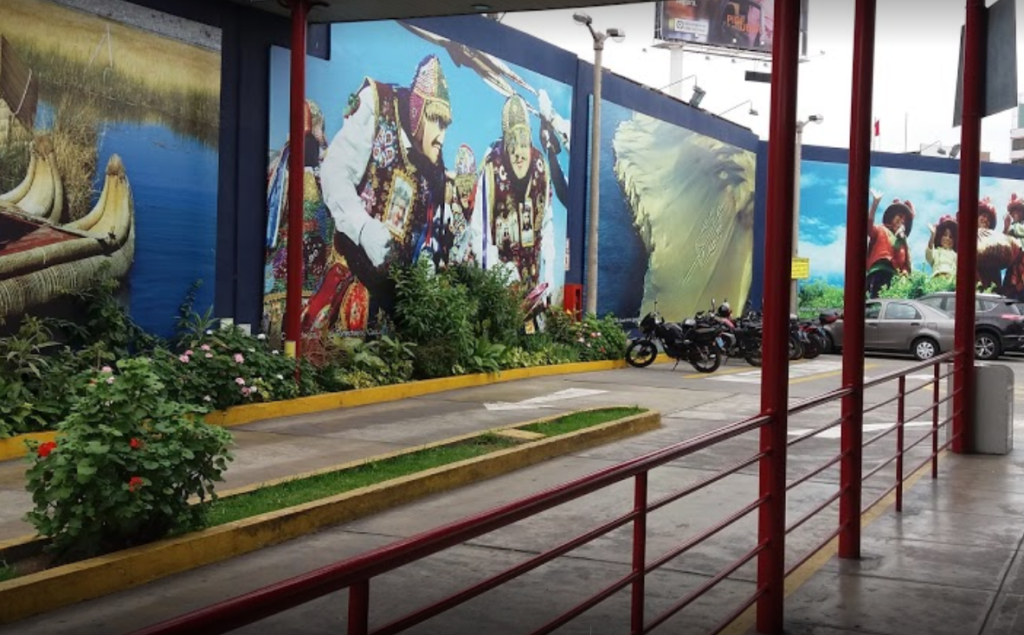When I ended the previous post, I’d descended to the hotel lobby at 06:00 Sunday with bag in tow anxious about where I’d spend the coming 72 hours. I was looking for Berner hoping he’d appear with my travel vouchers for the extension to Paracas but at the time I remained uncertain whether I’d be making the trip south, extending my stay in Lima, or trying to make an early return to the States.
Although the title of today’s post reveals the outcome, when he arrived Berner didn’t have the documents nor were they at the front desk when he asked the staff. Alejandro arrived a few minutes later and he, too, knew nothing about my documents. Fortunately, after a few phone calls and a stop at the local agency’s office, Berner was able to procure my bus ticket and hotel vouchers. He went back to the hotel to oversee Jan’s departure and Alejandro and I set off to the Cruz del Sur bus station for my trip to Paracas and my much-anticipated flight over the desert geoglyphs of the Nazca culture colloquially (and hereafter) called the Nazca Lines.
Alejandro, was kind enough to spend a few minutes with me as I waited for my 07:30 departure. We chatted about driving in Lima and he told me of the time he’d spent flying people over the Nazca Lines which he said could be an even more harrowing experience than Lima traffic. I mistakenly paid little heed to that warning.
It’s Nazca, not Nascar
When I booked the trip, Journey Latin America offered a choice of two extensions. Jan chose the Peruvian Amazon – and I opted for Paracas. This small coastal town of 2,300 people some 250 kilometers south of Lima would serve as my base to visit two sites I found particularly enticing: the Nazca Lines and the Islas Ballestas (Ballestas Islands) – a wildlife preserve sometimes called Perú’s Galapagos. Since I’ll cover each of those in some detail in an upcoming post, I’ll use the four-hour bus ride to tell you some of what I learned about the Nazca culture.
Thus far in our continental crossing we’ve encountered several pre-Columbian Andean civilizations. I’ve written about one in great detail (Inkas) and looked at others (Chiripa, Pukara, Tiwanaku, Wari) in much less depth. Seeking a middle ground, I hope the ensuing discussion will provide some insight into this coastal civilization that left us one of the world’s great mysteries.
The Nazca culture flourished along the shores of the Pacific Ocean for a period spanning from 200 BCE to about 750 CE more or less concurrent with the Tiwanaku culture we met in the Bolivian Andes. Unlike the more centralized Andean societies, the Nazca seem to have been a loose confederation of fiefdoms that shared a common language and culture. In his book The Incas and Their Ancestors, Michael E. Moseley describes a main feature of Nazca culture as one of
individuality – with cultural coherence, but without large-scale or integrated power – were Nazca hallmarks.
Writing about Lima’s climate, I noted the rarity of rain in the capital city. When one learns about the geography, this becomes unsurprising because much of the west coast of South America is, in fact, a desert.
(Photo Source: Wikipedia by Hookery under CC 4.0)
(Although the creator of the above map marks three divisions, most geographers label the entire Peruvian desert as the Sechura and call the Chilean expanse the Atacama. In some texts you will find the entire 3,600 length stretching from near Chiclayo in northern Perú to La Serena in central Chile referred to as the Atacama.)
People living in a desert climate face significant challenges not the least of which is agriculture and water management. Most historians believe these factors constrained the population of the Nazca which they think reached its zenith at about 25,000. Thus, it’s unsurprising, given this constrain and the way their culture appears too have prized individuality, that to date only two principal urban and religious sites of note have been found.
Ventilla, located about 50 kilometers northeast of the modern town of Nazca, appears to have been the capital. It was relatively small – about 2 hectares – and characterized by ceremonial mounds, walled courts, and terraced housing. The other urban area, Cahuachi, was notable for its 40 large pyramid shaped adobe mounds and is 25 kilometers west of Nazca. It appears to have been the culture’s main religious site and may have been a place of pilgrimage. Most of the Nazca Lines are between these two sites.
Of course, living in a desert environment, the biggest resource challenge was, as I noted above, sourcing and utilizing water. Evidence suggests the Nazca were ingenious water managers. Nearly all their settlements are characterized by an extensive network of underground aqueducts and cisterns that provided irrigation, minimized water loss to evaporation, and helped ensure the water supply during the dry season.
Part two of this post takes a look at Nazca culture.

